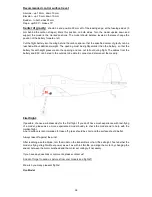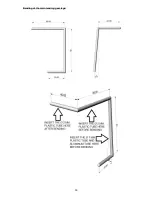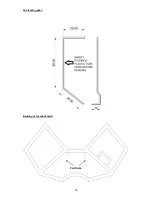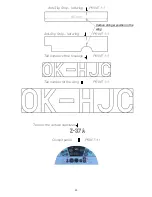
11
The
leading-edge
slats
can
be
attached to the end of both wings with
narrow pins, according the image to
the right. There are 4 pins per side and
are only glued to the wings after the
first flight with a few drops of CA.
Aileron Servos:
Cut the aileron control horns from bottom perpendicular to the "hinge" at a distance of 20 mm from
their inner edge and glue them with CA.
Choose the position of the servos so that their levers are flush with the control horns and have a
distance of about 20-25 mm from the "hinge".
If the servos are wider, then choose the distance so that the servos may be cut flush with the
underside of the wing profile. Install the servos in the same way as in the cockpit (cut-out in each
direction about 1 mm smaller). Glue the servos in after painting the model.
Prepare the pushrods for the aileron linkage. The length corresponds to the distance between the
control horn and servo lever, with Z-bends on both
ends. It is recommended to make a V-bend on the
pushrod in the middle, so that the length can be
adjusted later, see picture.
The servo cables are routed in cuts (not too
deep) at the bottom of the wing into the
center and there through the wing to the top
(to the channel in the fuselage).
Use servo extension cables in the length
corresponding to the servo cable length,
which extend into the cavity for the receiver in
the fuselage (normally 20 - 30 cm -
measure!). If the channel for the cables in the
fuselage still needs to be modified, it is best
to be done with a piece of hot wire.
If you only want to use a 4-channel receiver,
a Y-cable must be used for the aileron
servos.







































